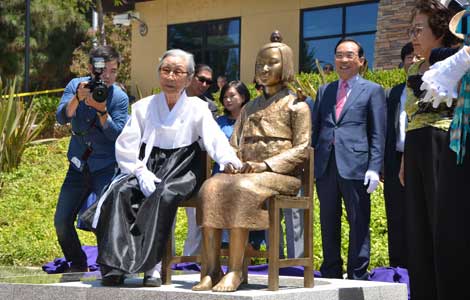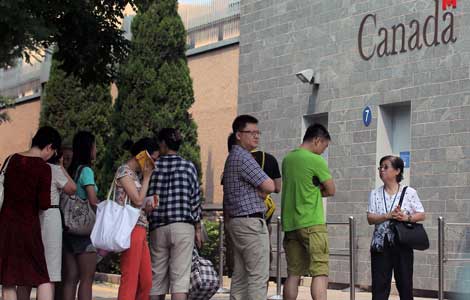
Air quality report from ministry paints worrying picture for cities
Ozone has become a major air pollutant in addition to fine particles, posing an even higher risk, according to a report released on Wednesday.
The air quality report from the Ministry of Environmental Protection covers three key areas and 74 cities during the first half of 2013.
The average levels of ozone in Beijing, Tianjin and Hebei province, the Yangtze River Delta area, and the Pearl River Delta area all exceeded the national level by about 20 percent from January to June.
Baoding in Hebei province recorded the highest reading for the daily average ozone level — 500 micrograms per cubic meter — more than twice the national level.
Although ozone in the stratosphere blocks high levels of ultraviolet from reaching Earth, it is highly destructive to the respiratory tract, according to research findings.
High levels of ozone are also irritating to the eyes and may cause irreversible damage to the lungs and central nervous system.
The report says that based on the data for June, air pollution caused by ozone in the Yangtze and Pearl River delta areas was even more serious than pollution caused by PM2.5 — particulate matter smaller than 2.5 micrometers in diameter that can reach deep into the lungs.
Ozone is more hazardous to human health than PM2.5, more complicated and harder to control, according to Zhao Hualin, head of the pollution prevention and control department at the Ministry of Environmental Protection.
Zhong Liuju, an atmospheric environmental expert from Guangdong province, said ozone is also dangerous because of its invisibility, which means that pollution can be severe even on blue-sky days.
Chai Fahe, vice-president of the Chinese Research Academy of Environmental Sciences, said high levels of ozone can also enhance the process in which PM2.5 is formed.
Chai said ozone does not come directly from emissions involving human activity, but is formed when there is strong sunshine and high temperatures through the reaction of nitrogen oxides and volatile organic chemicals.
He said one way to control ozone levels is to reduce nitrogen oxides, which come mainly from vehicle exhaust emissions.
In Baoding, the city government has listed ozone as one of the major pollutants in its plan to improve air quality.
Measures have been taken to reduce exhaust emissions by removing highly polluting vehicles from the roads, restricting barbecue stalls in the open air and removing small boilers, said Chen Zhenhui, an official from the city's environmental protection department.
The report also said that almost 40 percent of the 74 cities that publicized their readings failed to meet the national standard for fine particle pollutants — less than 35 micrograms per cubic meter — for more than three months in the first half of the year.
In Hebei, seven cities are on the top 10 list for having the most severe air pollution.
Shijiazhuang, the provincial capital, saw fewer than 20 days of good air quality in the first six months of the year.
A provincial action plan for air quality, which includes much tougher measures to cut major pollutants in the next five years, especially PM 2.5, will be released soon, according to an official from the provincial environmental protection department in Hebei, who declined to be named.
Four cities in the province — Shijiazhuang, Tangshan, Langfang and Baoding — were recently included on the central government's list of key areas for air pollution control.
The province has set emissions caps for major pollutants from highly polluting industries, such as the thermal power and iron and steel industries.
The official said the caps will come into force from July 1, 2014, adding that other measures will also be taken, such as strengthening supervision and building early warning and emergency response systems.
The situation for the region of Beijing, Tianjin and Hebei province is even more worrying.
Its PM2.5 level was recorded at 115 micrograms per cubic meter, more than three times the national standard, meaning that no cities in the area had good air quality.
Contact the writers at wuwencong@chinadaily.com.cn and zhengjinran@chinadaily.com.cn








